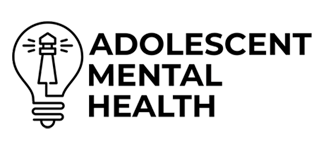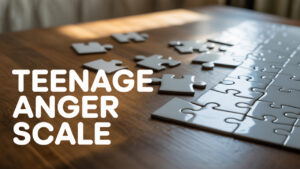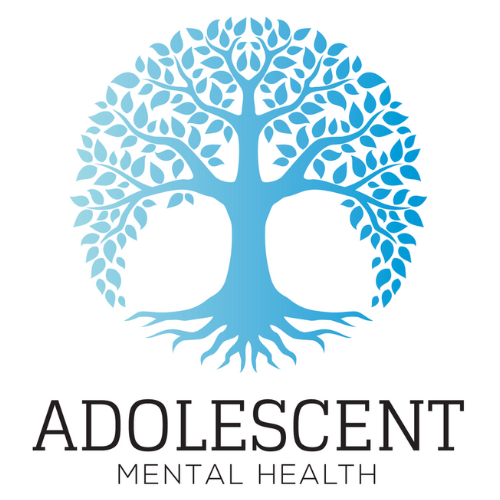Body Dysmorphia in Teens
Body image concerns are common in adolescence. However, when a teen shows excessive preoccupation with minor or imagined flaws, it may be a sign of Body Dysmorphic Disorder (BDD). Understanding body dysmorphia in teens is essential for early detection and proper treatment.
Understanding Body Dysmorphic Disorder (BDD)
What is BDD?
Body dysmorphic disorder is a psychiatric disorder characterized by persistent worries about physical appearance. People with body dysmorphia often experience extreme distress that affects daily life. This condition is part of the OCD-spectrum disorder family and shares features with obsessive-compulsive disorder.
Key Characteristics of BDD
Teens with BDD often display:
- Excessive preoccupation with flaws
- Repetitive behaviors like mirror checking or grooming
- Poor insight into the severity of their worries
- Thoughts that meet the DSM-IV criteria for dysmorphic disorder
Symptoms of body dysmorphia impact psychosocial functioning and can lead to social isolation and quality of life reductions.
Causes of Body Dysmorphia in Teens

Genetic Factors
Research published in the American Journal of Psychiatry and Psychiatry Research suggests a strong family history of mental health issues, including anxiety disorders and mood disorders, may raise the risk.
Environmental Influences
Experiences like bullying or teasing about body image during developmental stages can worsen negative body image concerns. These developmental processes play a critical role in the onset of dysmorphic symptoms.
Role of Social Media and Peer Pressure
Social media often promotes unrealistic standards, leading to body image dissatisfaction and self-reported appearance preoccupation in teens. Peer pressure can fuel feelings of inadequacy and drive compulsive efforts to fix perceived flaws.
Symptoms of Body Dysmorphia
Physical and Behavioral Signs
Common symptoms of body dysmorphia include:
- Excessive grooming
- Frequent mirror checking
- Seeking plastic surgery or cosmetic surgery
These compulsive behaviors often target specific areas like breast size or muscle size, contributing to conditions like muscle dysmorphia.
Emotional and Psychological Effects
Teens may experience:
- Severe depression
- Social anxiety disorder
- Suicidal ideation
Persistent feelings of distress about negative body issues and features of body dissatisfaction can lead to self-harm or suicide attempts.
Diagnosis of BDD
Clinical Assessments and Interviews
Diagnosis involves interviews with a mental health professional or mental health provider who uses structured assessments to measure levels of distress, internal consistency, and convergent validity.
Differentiating from Normal Teen Behavior
Normal body image issues are common during adolescence. However, dysmorphic disorder in adolescents shows greater levels of distress, higher rates of suicide attempts, and stronger disruption to everyday life.
Impact of Body Dysmorphia on Teens

Academic Performance and Daily Life
BDD interferes with concentration, leading to lower grades and avoidance of social settings. It can significantly harm psychosocial functioning and participation in social situations.
Social Relationships
Many teens withdraw from peers, leading to social isolation. Self-harming behaviors and self-reported appearance preoccupation further strain social bonds.
Comorbid Conditions Associated with BDD
Anxiety Disorders
BDD frequently coexists with anxiety disorders, including social anxiety disorder and panic disorder.
Depression and Mood Disorders
Major depression and other mood disorders are among the common comorbidities seen in kids with body dysmorphia, teens with body dysmorphia, and adults with body dysmorphia.
Risk of Panic Attacks
Sudden feelings of extreme distress about body image concerns can trigger panic attacks, worsening overall mental health.
Treatment Options for BDD
Cognitive Behavioral Therapy (CBT)
Cognitive-behavioral therapy with exposure with response prevention is an evidence-based treatment that helps reduce compulsive behaviors and distorted thinking. Studies in the Journal of the American Academy of Child and Adolescent Psychiatry support CBT as an effective treatment for BDD.
Medications: SSRIs and Others
Selective serotonin reuptake inhibitors (SSRIs) help manage dysmorphic disorder treatment by reducing obsessive thoughts. SSRIs are often used when there is significant psychiatric comorbidity like depression.
Importance of Early Intervention
Addressing severe body dysmorphia early prevents worsening depressive symptoms and poor social functioning. Early treatment improves quality of life and reduces the risk of self-harm and suicide attempts.
Role of Healthcare Providers in Addressing BDD

Identifying Signs and Symptoms Early
Providers must monitor parent-reported appearance preoccupation and self-reported appearance preoccupation carefully. Early recognition allows for faster support and intervention.
Collaborative Care Approaches
Effective care often includes Family therapy, behavioral therapy, and psychiatric disorder management across clinical settings. Collaborative approaches enhance outcomes for teens showing poorer insight.
Supporting Teens with Body Dysmorphia
Role of Parents and Family
Families should support their teen with body dysmorphia by promoting open communication and understanding the emotional impact of body image concerns.
Involvement of Educators
Teachers play a key role by recognizing the prevalence of body image concerns and encouraging positive body image in school environments.
Creating a Supportive Environment
A home and school culture that discourages bullying and encourages realistic beauty standards reduces negative body image risks.
Preventive Measures and Education
Raising Awareness About Body Image
Programs that promote healthy body standards and reduce the influence of social media on body image dissatisfaction are important preventive measures.
Encouraging Healthy Social Media Use
Helping teens develop critical thinking skills about online content can lower appearance preoccupation and prevent the worsening of symptoms of body dysmorphia.
FAQ's
Early warning signs include excessive preoccupation with physical appearance, frequent mirror checking, and seeking reassurance about perceived flaws. Teens may also show symptoms of body dysmorphia like repetitive behaviors, social withdrawal, and feelings of extreme distress in social situations. Early detection by a mental health professional is important for starting proper dysmorphic disorder treatment.
While many teens have occasional body image worries, body dysmorphic disorder causes persistent, obsessive thoughts that interfere with daily life and psychosocial functioning. Teens with BDD often meet diagnostic criteria for a psychiatric disorder and show signs like poorer insight, excessive preoccupation, and self-reported appearance preoccupation that go beyond typical adolescent insecurities.
Cognitive-behavioral therapy with exposure with response prevention is the most common and effective treatment for severe body dysmorphia. SSRIs and other medications may be recommended to manage associated mood disorders or anxiety disorders. Support from family through Family therapy and ongoing care from a mental health provider can help improve quality of life and reduce the risk of self-harm or suicide attempts.
Yes, heavy use of social media can increase body image dissatisfaction and appearance preoccupation in teens. Exposure to idealized body types online often reinforces negative body issues and can lead to worsening dysmorphic symptoms. Encouraging healthy social media habits and promoting critical evaluation of content are important preventive steps against developing or worsening body image concerns.









